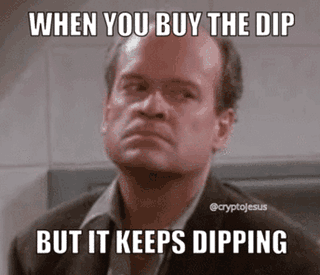Private Equity Operational Improvements
Private Equity’s (PE) entire pitch is that they buy companies which are poorly managed, they come in with their experience, improve the company and then sell it. They supposedly make money derived from operational improvements and can then sell at a a higher price. Since all the transactions are private, it is very hard to verify these claims (how convenient). However, as part of some deals, the companies in question issue publicly traded debt. In order to issue this debt they have to file financial statements pre and post acquisition. The authors of the linked article put together a database of 993 deals from 1996 – 2021. We don’t want to go into detail into the entire article (you can read it if you want details), but just highlight the main points of their findings:
- Most operational metrics don’t improve post acquisition (revenue growth, EBITDA growth, CAPEX spend, ROE and ROA).
- There seems to be a trend in which all the above mentioned metrics dip right before the time of the acquisition. The theory is that management is focused on the transaction and related due diligence and business performance suffers because of it.
- So what does go up after acquisition? Leverage… debt to EBITDA ratios are flat before acquisition (in fact on average they’re negative) and go up right after acquisition.
So do PE companies really make their money off operational improvements? For sure some do, the data set used isn’t comprehensive by any means. And there is a significant selection bias since the only companies that are included are companies with publicly traded debt. The broader point here is that we like to look at data when making decisions. Sure the operational improvements story makes sense and sounds really nice. But we want to look at hard numbers (which are pretty much never furnished in presentations and the ones we’ve seen are a subset that look good).

PE’s portfolio markdowns show no signs of letting up
We’ve written many times before, PE funds don’t mark to market. This is kind of unfair to us public market managers since they look artificially good on risk metrics since there is no volatility. However, PE funds eventually do have to reflect reality (there’s no choice but to report the real price when they sell). Another aspect of PE funds is that they report with a lag. It takes time to collect data from companies and perform the quarterly valuations. So PE funds tend to report with a 3 month lag. It seems they’re finally marking down their portfolios after the 20% loss on the S&P 500 last year. The market has rebounded quite strongly this year but we don’t think we’ve seen the last of it. So more pain to come for PE funds.

U.S. Takes Third Shot at Shoring Up Money-Market Funds
Liquidity is an interesting concept, we’ve been meaning to do a deeper dive into the topic for some time but haven’t gotten around to it. Liquidity affects us all, whether in our personal finances, investments, etc. Being urged for liquidity is a terrible thing since you will often tend to sell things for way too cheap to just be able to sell them quickly.
A money market fund (MMF) is a fund that invests in short term and highly rated fixed income. It is meant to be a fund in which investors park their money instead of just keeping it in cash. Two years ago it didn’t make much of a difference from a return perspective whether you invested in a money market mutual fund or kept cash at the bank. However, today MMFs have very attractive yields with some yielding up to 5.6% (vs. close to 0% for cash at banks). In theory MMFs’ price doesn’t fluctuate and should be worth $1 (or pretty close to it). Before 2008 they were always worth $1, and there was a large panic when the Reserve Primary Fund broke the buck; it’s net asset value dropped to $0.97. This was caused by the Lehman Brothers bankruptcy.
The panic was caused because investors assumed that the NAV could not drop to below $1. So when they realized that it could they panicked en masse. The same concept applies to liquidity. As long as there’s no crisis and things are fine, then you can redeem from your money market fund with no problems and without affecting other investors. However, in times of stress when redemption requests start to pile up as investors want their money back, there can be liquidity issues. If an MMF (this applies to other funds as well) need to quickly liquidate assets to meet redemption calls, then they might have to sell the assets at much lower prices. This causes a perverse incentive in which the investors which don’t sell will be negatively affected (since the securities they own went down in price). The SEC just approved new regulations that require MMFs to impose fees on redeeming investors if redemptions exceed 5%. This is meant to protect the investors which remain in the fund. It is well intentioned but it may also cause unintended consequences. If you are thinking about redeeming and you know the fund is about to pass the 5% threshold you may be incentivized to redeem immediately to be able to get your money out before fees begin being charged. Therefore, the imposing of fees may act as a trigger for redemptions (the same concept applies to market wide circuit breakers).

What’s Behind Nasdaq 100’s First-Ever ‘Special Rebalance’?
The Nasdaq has been on a tear recently. It is up close 42% so far this year, led by a couple of mega cap stocks (more like uber cap stocks). This has led to roughly 6 stocks representing almost 50% of the index (there are 100 stocks in the index). In the US there is a rule in which funds which are regulated as investment companies need to be diversified. This is measured as the % of the fund that is made up of holdings which have 5% or greater weight in the portfolio. These 5% stocks cannot represent more than 50% of the portfolio. In other words you cannot have more than 10 stocks each at 5% weight. Since the Nasdaq 100 has already breached thi threshold on at least one day in the last couple of weeks, the Nasdaq is holding a special rebalance to fix this issue. They are going to cap the weights of the largest companies to make sure funds tracking the index can stay compliant. This speaks to the massive rally we’ve seen this year and to the concentration of this rally. It is concentrated in a handful of stocks which makes them be a larger and larger weight of the index.

Saudi Aramco Getting Cash Meant for Sustainable Investment Reveals ESG Loophole
We’ve been critical of ESG before, in fact a couple of weeks ago we wrote about it, you can read it here. The latest controversy is that Aramco bonds have been showing up in ESG indices. Yes, ESG funds are buying debt issued by the largest oil company in the world. How this happened is via a series of structures and special purposes vehicles. The rating methodologies used for ESG don’t generally look through these structures, therefore Aramco bonds ended up in ESG funds. We wonder if now that this is out will the funds sell out of their positions?





